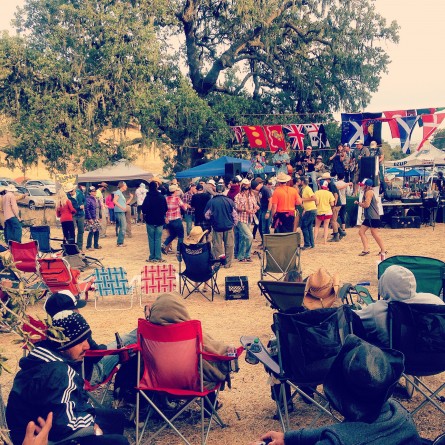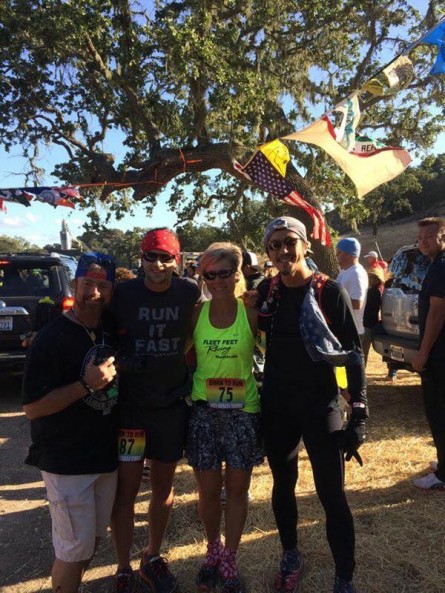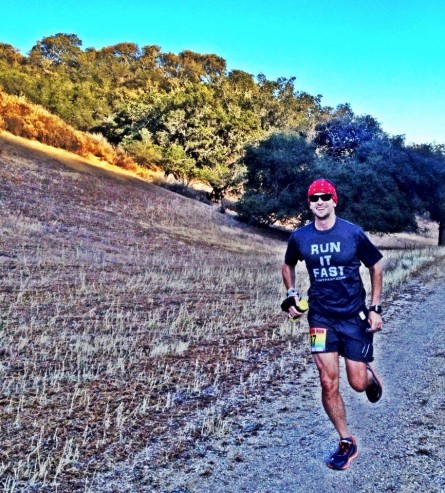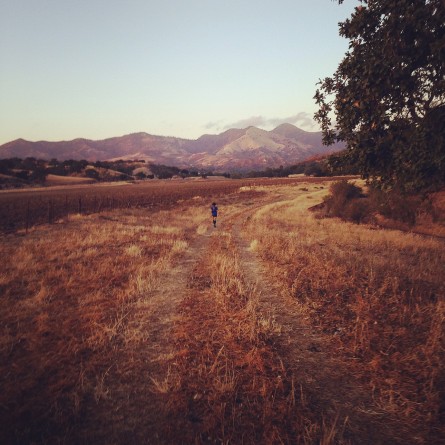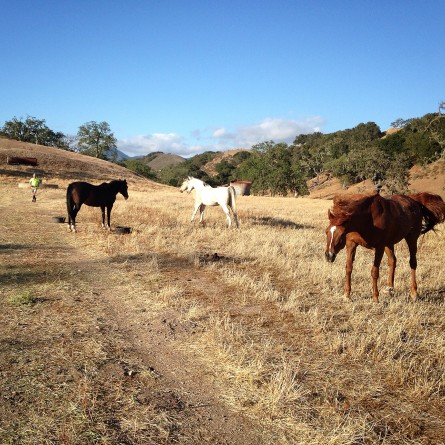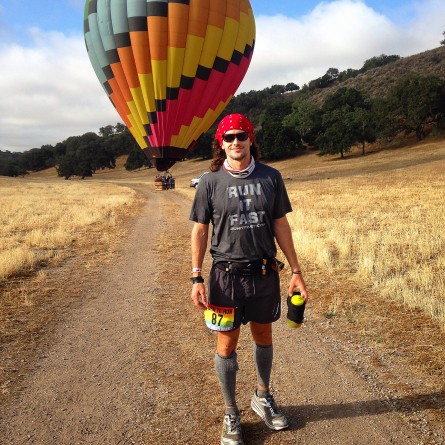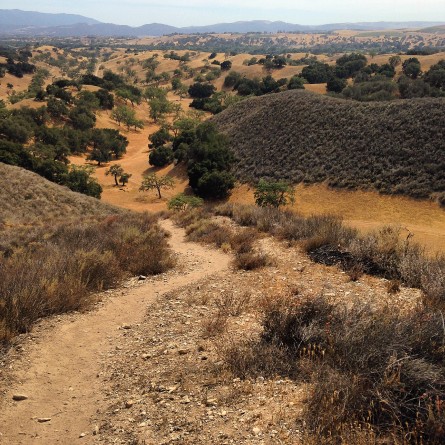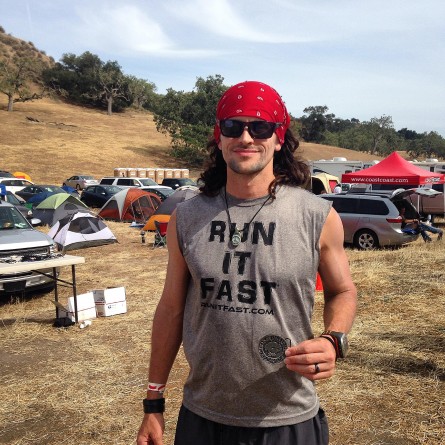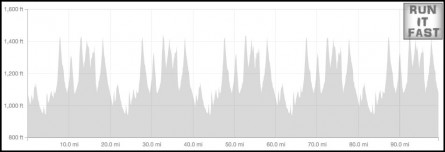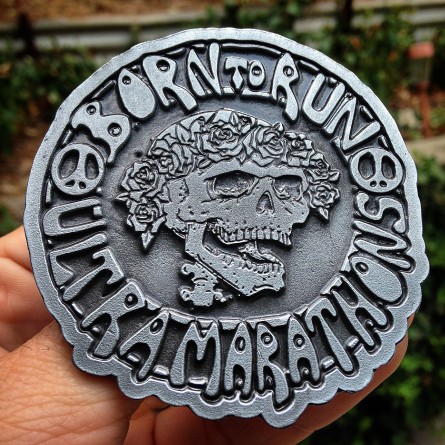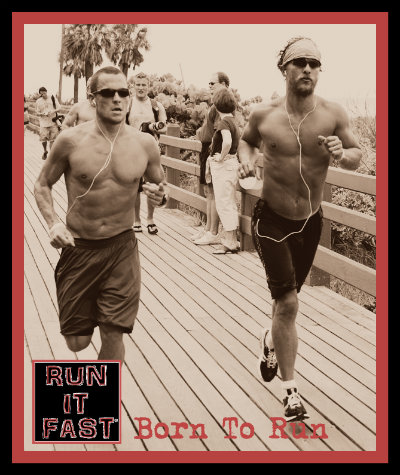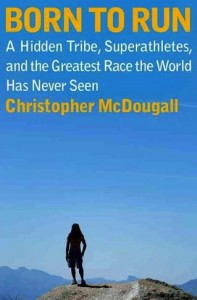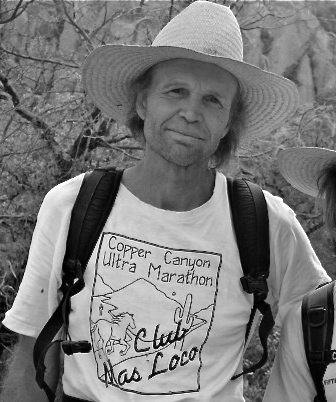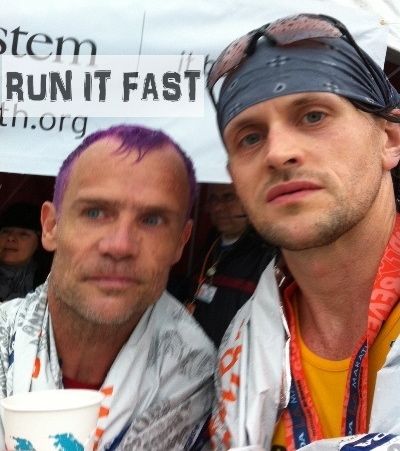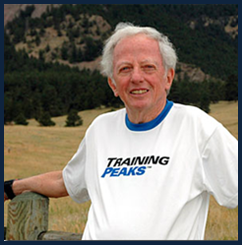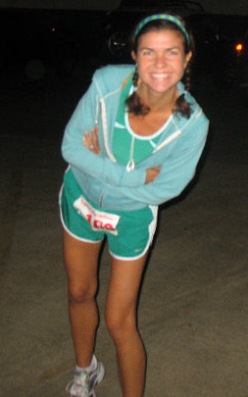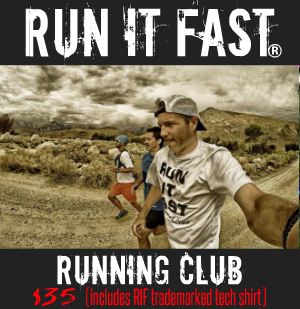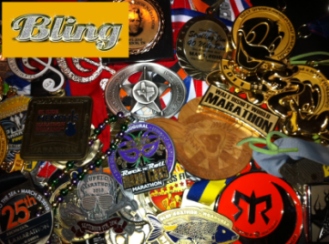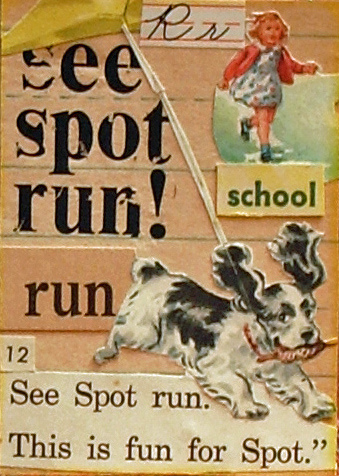
Here is a look at some of The Greatest Running Books of All-Time as recommended by our readers via Twitter.
We will have a vote in the next day or two to determine the best of the best.
The best thing about lists or compilations is that you will agree, disagree, and argue. Enjoy!!
(Click any of the book titles to read reviews, read parts, or even purchase from Amazon)
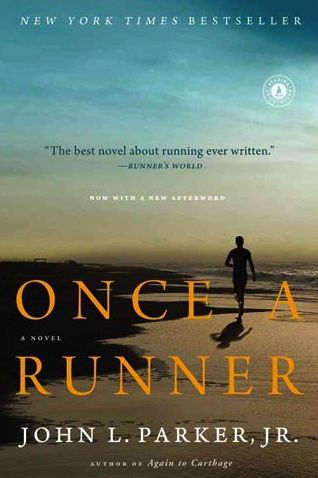
Once a Runner: A Novel – John L. Parker, Jr.
Originally self-published in 1978, Once a Runner captures the essence of competitive running—and of athletic competition in general—and has become one of the most beloved sports novels ever published..
Inspired by the author’s experience as a collegiate champion, the story focuses on Quenton Cassidy, a competitive runner at fictional Southeastern University whose lifelong dream is to run a four-minute mile. He is less than a second away when the turmoil of the Vietnam War era intrudes into the staid recesses of his school’s athletic department. After he becomes involved in an athletes’ protest, Cassidy is suspended from his track team. Under the tutelage of his friend and mentor, Bruce Denton, a graduate student and former Olympic gold medalist, Cassidy gives up his scholarship, his girlfriend, and possibly his future to withdraw to a monastic retreat in the countryside and begin training for the race of his life against the greatest miler in history. .
A rare insider’s account of the incredibly intense lives of elite distance runners, Once a Runner is an inspiring, funny, and spot-on tale of one man’s quest to become a champion.
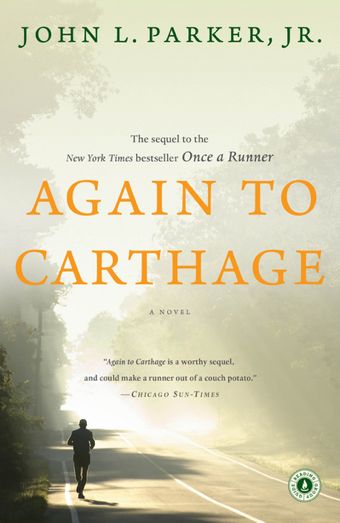
Again to Carthage: A Novel – John L. Parker, Jr.
Again to Carthage is the “breathtaking, pulse-quickening, stunning” sequel to Once a Runner that “will have you standing up and cheering, and pulling on your running shoes” (Chicago Sun-Times). Originally self-published in 1978, Once a Runner became a cult classic, emerging after three decades to become a New York Times bestseller. Now, in Again to Carthage, hero Quenton Cassidy returns.
The former Olympian has become a successful attorney in south Florida, where his life centers on work, friends, skin diving, and boating trips to the Bahamas. But when he loses his best friend to the Vietnam War and two relatives to life’s vicissitudes, Cassidy realizes that an important part of his life was left unfinished. After reconnecting with his friend and former coach Bruce Denton, Cassidy returns to the world of competitive running in a desperate, all-out attempt to make one last Olympic team. Perfectly capturing the intensity, relentlessness, and occasional lunacy of a serious runner’s life, Again to Carthage is a must-read for runners—and athletes—of all ages, and a novel that will thrill any lover of fiction.
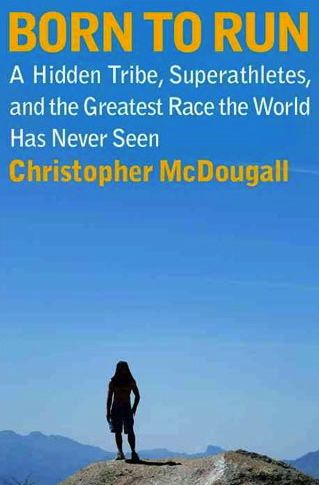
Born to Run: A Hidden Tribe, Superathletes, and the Greatest Race the World Has Never Seen – Christopher McDougall
Isolated by Mexico’s deadly Copper Canyons, the blissful Tarahumara Indians have honed the ability to run hundreds of miles without rest or injury. In a riveting narrative, award-winning journalist and often-injured runner Christopher McDougall sets out to discover their secrets. In the process, he takes his readers from science labs at Harvard to the sun-baked valleys and freezing peaks across North America, where ever-growing numbers of ultra-runners are pushing their bodies to the limit, and, finally, to a climactic race in the Copper Canyons that pits America’s best ultra-runners against the tribe. McDougall’s incredible story will not only engage your mind but inspire your body when you realize that you, indeed all of us, were born to run.
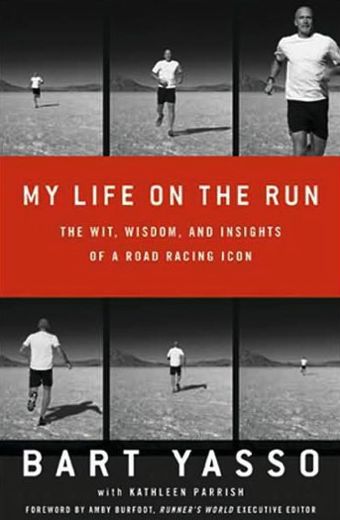
My Life on the Run: The Wit, Wisdom, and Insights of a Road Racing Icon – Bart Yasso
Bart Yasso, an icon of one of the most enduringly popular recreational sports in the United States, offers a touching and humorous memoir about the rewards and challenges of running.
Recounting his adventures in locales like Antarctica, Africa, and Chitwan National Park in Nepal (where he was chased by an angry rhino), Yasso recommends the best marathons on foreign terrain and tells runners what they need to know to navigate the logistics of running in an unfamiliar country. He also offers practical guidance for beginning, intermediate, and advanced runners, such as 5-K, half marathon, and marathon training schedules, as well as advice on how to become a runner for life, ever-ready to draw joy from the sport and embrace the adventure that each race may offer.
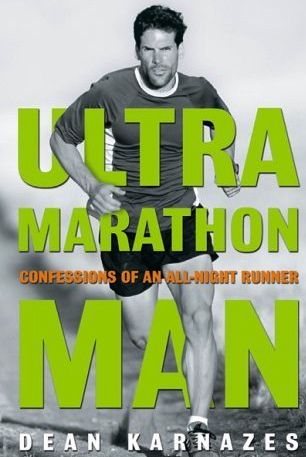
Ultramarathon Man: Confessions of an All-Night Runner – Dean Karnazes
Ultrarunning legend Dean Karnazes has run 262 miles-the equivalent of ten marathons-without rest. He has run over mountains, across Death Valley, and to the South Pole-and is probably the first person to eat an entire pizza while running. With an insight, candor, and humor rarely seen in sports memoirs (and written without the aid of a ghostwriter or cowriter), Ultramarathon Man has inspired tens of thousands of people-nonrunners and runners alike-to push themselves beyond their comfort zones and be reminded of “what it feels like to be truly alive,” says Sam Fussell, author of Muscle.
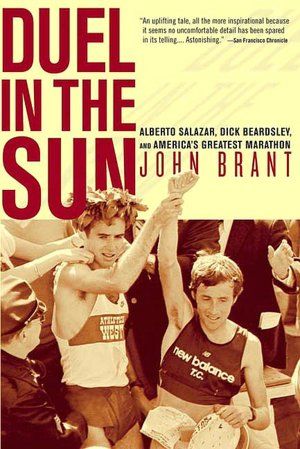
Duel in the Sun: The Story of Alberto Salazar, Dick Beardsley, and America’s Greatest Marathon – Jon Brant
The 1982 Boston Marathon was great theater: Two American runners, Alberto Salazar, a celebrated champion, and Dick Beardsley, a gutsy underdog, going at each other for just under 2 hours and 9 minutes. Neither man broke. The race merely came to a thrilling, shattering end, exacting such an enormous toll that neither man ever ran as well again. Beardsley, the most innocent of men, descended into felony drug addiction, and Salazar, the toughest of men, fell prey to depression. Exquisitely written and rich with human drama, Duel in the Sun brilliantly captures the mythic character of the most thrilling American marathon ever run–and the powerful forces of fate that drove these two athletes in the years afterward.
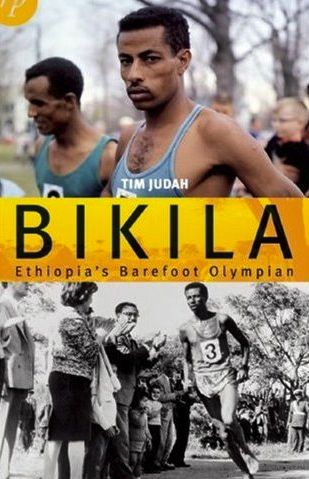
Bikila: Ethiopia’s Barefoot Olympian – Tim Judah
On September 10, 1960, Abebe Bikila, an Ethiopian, stunned the world when he won the Rome Olympic marathon running barefoot. He was the first black African to win a gold medal at the Olympics and overnight became a sporting hero, an African hero, and, for many, the first black African they had ever heard of. Bikila was a man of his times—a symbol of hope in the new Africa.
Now, for the first time, his true story is told. Central to that tale is the extraordinary life of another man—the Swede Onni Niskanen, Bikila’s trainer, a soldier and an adventurer. Together they took the sporting world by storm.
Although feted as a hero on his return to Addis Ababa, the celebrations didn’t last and Bikila was almost killed during Emperor Haile Selassie’s coup shortly after his return. His life spiralled into booze, girls, and cars until finally he was paralyzed in a car crash. The great athlete, however, forged through, and Bikila won a medal in the first Paraplegic Olympics for archery.
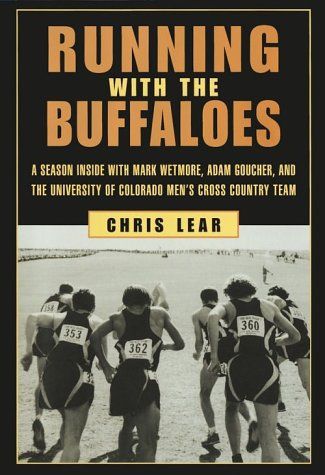
Running with the Buffaloes: A Season Inside with Mark Wetmore, Adam Goucher, and the University of Colorado Men’s Cross Country Team – Chris Lear
Colorado-based cross-country runner Lear follows the University of Colorado cross-country team, the Buffaloes, through its 1998 season, one with many high points but also marked by the tragic death of one of its team members in a bike accident. The University of Colorado’s cross-country program is one of the best in the country and, unlike most major cross-country powers, relies mainly on locally born athletes. The book minutely details the training and coaching techniques used to produce a team that is a constant contender for the NCAA championship. At times, the author provides almost too much detail, but the reader must marvel at the dedication and self-motivation of these young men as they run more than 100 miles a week for nearly seven months. In 1998, Colorado won the individual NCAA cross-country championship and finished third in the team competition. Apart from instructionals, few books cover cross-country; this one will appeal to high school athletes and is recommended for both school and public libraries. William Scheeren, Hempfield Area H.S. Lib., Greensburg, PA
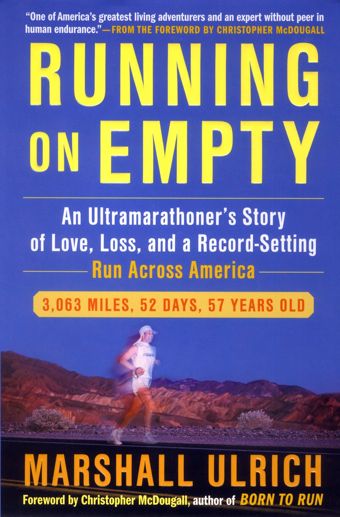
Running on Empty: An Ultramarathoner’s Story of Love, Loss, and a Record-Setting Run Across America – Marshall Ulrich
The ultimate endurance athlete, Marshall Ulrich has run more than 100 foot races averaging over 100 miles each, completed 12 expedition-length adventure races, and ascended the Seven Summits – including Mount Everest – all on his first attempt. Yet his run from California to New York- the equivalent of running two marathons and a 10K every day for nearly two months straight – proved to be his most challenging effort yet.
Featured in the recent documentary film, Running America, Ulrich clocked the 3rd fastest transcontinental crossing to date and set new records in multiple divisions. In Running on Empty, he shares the gritty backstory, including brushes with death, run-ins with the police, and the excruciating punishments he endured at the mercy of his maxed-out body. Ulrich also reached back nearly 30 years to when the death of the woman he loved drove him to begin running – and his dawning realization that he felt truly alive only when pushed to the limits.
Filled with mind-blowing stories from the road and his sensational career, Ulrich’s memoir imbues an incredible read with a universal message for athletes and non-athletes alike: face the toughest challenges, overcome debilitating setbacks, and find deep fulfillment in something greater than achievement.
Why We Run: A Natural History – Bernd Heinrich
In Why We Run, biologist, award-winning nature writer, and ultramarathoner Bernd Heinrich explores a new perspective on human evolution by examining the phenomenon of ultraendurance and makes surprising discoveries about the physical, spiritual — and primal — drive to win. At once lyrical and scientific, Why We Run shows Heinrich’s signature blend of biology, anthropology, psychology, and philosophy, infused with his passion to discover how and why we can achieve superhuman abilities.
Run to Overcome: The Inspiring Story of an American Champion’s Long-Distance Quest to Achieve a Big Dream – Meb Keflezighi
When Meb Keflezighi won the New York City Marathon in 2009—the first American to do so in 27 years—some critics questioned whether the Eritrean-born runner was “really” an American despite his citizenship status and representing the USA on two Olympic and several World Championship teams. Yet Meb is the living embodiment of the American dream. His family came to the U.S. to escape from a life of poverty and a violent war with Ethiopia; Meb was 12 at the time, spoke no English, and had never raced a mile. Yet he became an A student and a high school state and national champion. And when he stood on the platform as a silver medalist in the 2004 Olympics, Meb knew his hard work and determination had paid off. How could life be any better?
Then it all came crashing down. Meb, a favorite for the Beijing Olympics, fractured his pelvis during the trials and was left literally crawling. His close friend and fellow marathoner suffered a cardiac arrest at the trials and died that same day. Devastated, Meb was about to learn whether his faith in God, the values his parents had taught him, and his belief that he was born to run were enough to see him through.
Run to Overcome tells the inspirational story of a man who discovered the real meaning of victory, and who embodies the American spirit of overcoming the odds.
Marathon: A Novel – Hal Higdon
Celebrity X (more famous than Oprah) departs Rome on a private jet bound for the Lake City Marathon. Race director Peter McDonald arrives at the Expo for an inter-view with TV reporter Christine Ferrara, new in town. Peter and Christine find love almost immediately, but when will she learn the dark secret that clouds his life? Thus begins the fascinating 72-hour countdown to the Lake City Marathon, a race beset by problems: Will Peter lose his sponsor and job? Will hot weather threaten the health of runners? Can he keep the identity of Celebrity X secret? And for Chris-tine: Why is Namia the supermodel clinging to Peter s side? The race up front pits fast Kenyans against twin brothers from Minnesota. Among the women, the sudden loss of the world record holder opens the door for a flirty Irishwoman and an unheralded podiatrist, who has not raced since injuries cancelled her college career. Back in the pack, Nania raises money for charity, a New York Times reporter chases Celebrity X, and once-married color commentators bicker their way through the telecast. Marathon, amazingly, is Hal Higdon s first novel, told in the grand tradition of fact/fiction books by James Michener (Hawaii, The Source) and Arthur Hailey (Hotel, Airport). Whether runner, veteran, newcomer, or someone who has a friend who runs, Marathon will shock and surprise you as it uncovers the drama and intrigue behind the roadrunner s sport.
Feet in the Clouds: A Tale of Fell-Running and Obsession – Richard Askwith
Exploring the world of fell-running—to run the ancient, wild landscape and stay a hero within one’s own valley—this portrait of one of the few sports to have remained implacably amateur and utterly true to its roots details the passionate ambitions of those who participate in one of the oldest extreme sports. With personal narrative by one of the participants of fell-running—a sport that little is known about, but one that also boasts mass-participation—this fascinating account of arduous circuits, week-long marathons, and pounding the mountainous trails of the Lake District and Snowdonia is a unique and compelling account of stamina and courage that stretches the limits of belief.
Lore of Running, 4th Edition – Timothy Noakes
Lore of Running gives you incomparable detail on physiology, training, racing, injuries, world-class athletes, and races.
Author Tim Noakes blends the expertise of a physician and research scientist with the passion of a dedicated runner to answer the most pressing questions for those who are serious about the sport
Devoted: The Story of a Father’s Love for His Son – Don Yeager & Dick Hoyt
The remarkable story of a father’s devotion to his wheelchair-bound son and how their bond inspired millions of people worldwide.
Born a spastic quadraplegic, Rick Hoyt was written off by numerous doctors. They advised his parents, Dick and Judy, to put their firstborn son in an institution. But Rick’s parents refused. Determined to give their son every opportunity that “normal” kids had, they made sure to include Rick in everything they did, especially with their other two sons, Rob and Russ.
But home was one thing, the world at large, another. Repeatedly rebuffed by school administrators who resisted their attempts to enroll Rick in school, Rick’s mother worked tirelessly to help pass a landmark bill, Chapter 766, the first special-education reform law in the country. As a result, Rick and other physically disabled kids were able to attend public school in Massachusetts.
But how would Rick communicate when he couldn’t talk? To overcome this daunting obstacle, Dick and Judy worked with Dr. William Crochetiere, then chairman of the engineering department at Tufts University, and several enterprising graduate students, including Rick Foulds, to create the Tufts Interactive Communication device (TCI). In the Hoyt household, it became known as the “Hope machine,” as it enabled Rick to create sentences by pressing his head against a metal bar. For the first time ever, Rick was able to communicate.
Then one day Rick asked his dad to enter a charity race, but there was a twist. Rick wanted to run too. Dick had never run a race before, but more challenging still, he would have to push his son’s wheelchair at the same time. But once again, the Hoyts were determined to overcome whatever obstacle was put in their way.
Now, over one thousand races later, including numerous marathons and triathlons, Dick Hoyt continues to push Rick’s wheelchair. Affectionately known worldwide as Team Hoyt, they are as devoted as ever, continuing to inspire millions and embodying their trademark motto of “Yes, you can.”
Racing the Antelope: What Animals Can Teach Us About Running and Life – Bernd Heinrich
“The human experience is populated by dreams and aspirations. For me, the animal totem of these dreams is the antelope, swift, strong, and elusive. we chase after ‘antelope,’ and sometimes we catch them. Often we don’t. But why do we bother? I think it is because without dream ‘antelopes’ to chase we become what a lapdog is to a wolf. And we are inherently more like wolves than lapdogs, because the communal chase is part of our biological makeup.”
In 1981, Bernd Heinrich, a lifelong runner, decided to test his limits at age forty-one and race in the North American 100-Kilometer Championship race in Chicago. To improve his own preparations as a runner, he wondered what he could learn from other animals–what makes us different and how we are the same–and what new perspective these lessons could shed on human evolution. A biologist and award-winning nature writer, he considered the flight endurance of insects and birds, the antelope’s running prowess and limitations, the ultraendurance of the camel, and the remarkable sprinting and jumping skills of frogs. Exploring how biological adaptations have granted these creatures “superhuman” abilities, he looked at how human physiology can or cannot replicate these adaptations. Drawing on his observations and knowledge of animal physiology and behavior, Heinrich ran the race, and the results surprised everyone–himself most of all.
In Racing the Antelope, Heinrich applies his characteristic blend of scientific inquiry and philosophical musing to a deft exploration of the human desire–even need–to run. His rich prose reveals what endurance athletes can learn about the body and the spirit from other athletes in the animal kingdom. He then takes you into the heart of his own grueling 100-kilometer ultramarathon, where he puts into practice all that he has discovered about the physical, spiritual–and primal–drive to win.
At once lyrical and scientific, Racing the Antelope melds a unique blend of biology, anthropology, psychology, and philosophy with Heinrich’s passion for running to discover how and why we run.
A Few Degrees from Hell: The 2003 Badwater Ultramarathon – Scott Ludwig
The Badwater Ultramarathon is commonly referred to as ‘the toughest footrace on the planet.’ In 2003 defending champion Pam Reed, Dean Karnazes and 71 other runners took the ultimate challenge of running 135 miles in California from Badwater to the portals of Mount Whitney. Their journey would take them through the hostile environment of Death Valley…and subject them to temperatures ranking among the highest ever recorded on earth. Twenty-five runners tell of their adventures in arguably the absolute toughest of ‘the toughest footrace on the planet’–the good, the bad and yes, the ugly–in this incredible and fascinating compilation. You are certain to gain a respect for the runners you will meet, and perhaps an even greater respect for the area known as Death Valley. The runners–who experienced heat exhaustion, dehydration, nausea, blisters, hallucinations and fatigue during the race–competed in temperatures literally ‘a few degrees from hell.’
Run Your First Marathon: Everything You Need to Know to Reach the Finish Line – Gret Waitz & Gloria Averbuch
Do you consider yourself too old or out-of-shape to run a marathon? Do you fear that you lack the conditioning, motivation, or emotional strength to finish? If so, Grete Waitz, nine-time winner of the New York City Marathon, has a program for you that has proven to help would-be racers do what they thought was impossible: complete their first marathon.
Falling Forward: Tales from an Endurance Saga – Dallas Smith
Falling Forward is a beautifully written story of one man’s quest for individual accomplishments in the sport of long distance running (marathons, ultra-marathons, and Iron Man.)
His most spectacular exploit was running three ultra-marathons…on three consecutive weekends he ran 100 miles, 100 miles, and 50 miles in Arkansas, Kansas, and Texas respectively, and on the fourth weekend he won his age division in a big 5K in yet a fourth state. Indeed, in the three years following the resignation of a long held professorship, he ran a dazzling array of races. In the process he set several age-group records and won the Tennessee State Running Tour championship.
And he’s over sixty.
Smith draws on this race saga to write a book of genuine adventure, one accessible to runner and non-runner alike. He writes like he runs, with a sharp eye for the details surrounding him — and he embraces all, taking the reader along for the journey.
His story deals honestly with the stark reality of pushing endurance to the limit. The experiences are at time poignant and funny, at other times painful and scary, but always human and personal. Falling Forward covers a lot of territory.
The Extra Mile: One Woman’s Personal Journey to Ultrarunning Greatness – Pam Reed
One year after her astonishing victory at the Badwater Ultramarathon, Pam Reed again made distance running history when she braved the hottest weather in years—135 degrees—to successfully defend her title. How does this 100-pound mother and stepmother of five muster the endurance and courage for the 28-hour climb from the hottest desert floor on Earth to the shadow of the continental United States’ tallest point?
In The Extra Mile we watch this ultramarathon champion seek balance in her life as a wife, mother, athlete, and entrepreneur. With astonishing candor she tells of her 15-year-long battle with anorexia. And she helps us to understand her passion for ultrarunning—to discover how far the human body can be pushed.
50/50: Secrets I Learned Running 50 Marathons in 50 Days – Dean Karnazes
Dean Karnazes has run 350 continuous miles through three sleepless nights, ordered pizza during long runs, and inspired fans the world over with his adventures. So what does a guy like this do when he wants to face the ultimate test of endurance? He runs 50 marathons in 50 states– in 50 consecutive days.
With little more than a road map and a caravan packed with fellow runners and a dedicated crew, Dean set off on a tour that took him through a volcanic canyon in Maui in high humidity and 88-degree heat; to an elevation gain of almost 4,000 feet at the Tecumseh Trail Marathon in Bloomington, Indiana; to a severed moose leg found alongside an Anchorage, Alaska trail that compelled him to sprint for safety.
Now in this heart-pounding book, Dean reveals how he pulled off this unfathomable feat with a determination that defied all physical limitations. But Dean goes beyond the story of the Endurance 50 marathons to share his invaluable secrets and advice for athletes of all levels. These are the tips that kept Dean going during the 1,310 miles he covered and 160,000 calories he burned while averaging sub-four-hour marathons and often sleeping fewer than four hours each night.
Unbroken: A World War II Story of Survival, Resilience, and Redemption – Laura Hillenbrand
On a May afternoon in 1943, an Army Air Forces bomber crashed into the Pacific Ocean and disappeared, leaving only a spray of debris and a slick of oil, gasoline, and blood. Then, on the ocean surface, a face appeared. It was that of a young lieutenant, the plane’s bombardier, who was struggling to a life raft and pulling himself aboard. So began one of the most extraordinary odysseys of the Second World War.
The lieutenant’s name was Louis Zamperini. In boyhood, he’d been a cunning and incorrigible delinquent, breaking into houses, brawling, and fleeing his home to ride the rails. As a teenager, he had channeled his defiance into running, discovering a prodigious talent that had carried him to the Berlin Olympics and within sight of the four-minute mile. But when war had come, the athlete had become an airman, embarking on a journey that led to his doomed flight, a tiny raft, and a drift into the unknown.
Ahead of Zamperini lay thousands of miles of open ocean, leaping sharks, a foundering raft, thirst and starvation, enemy aircraft, and, beyond, a trial even greater. Driven to the limits of endurance, Zamperini would answer desperation with ingenuity; suffering with hope, resolve, and humor; brutality with rebellion. His fate, whether triumph or tragedy, would be suspended on the fraying wire of his will.
In her long-awaited new book, Laura Hillenbrand writes with the same rich and vivid narrative voice she displayed in Seabiscuit. Telling an unforgettable story of a man’s journey into extremity, Unbroken is a testament to the resilience of the human mind, body, and spirit.
Run!: 26.2 Stories of Blisters and Bliss – Dean Karnazes
From the downright hilarious to the truly profound, the stories in Run! provide readers with the ultimate escape and offer a rare glimpse into the mindset and motivation of an extreme athlete, one who has, according to The Philadelphia Inquirer, “Not only pushed the envelope but blasted it to bits.”
Karnazes addresses pain and perseverance, and he also charts the emotional as he pushes to the edges of human achievement. The tales of the friendships he’s cultivated on his many adventures around the world warm the heart, and are sure to captivate and inspire readers whether they run great distances, modest distances, or not at all.
Food Guide for Marathoners – Nancy Clark
This superb volume from one of the world’s most respected sports nutritionists combines personal experiences with professional expertise to provide readers with all the information they need to get the very best from their diet. “Food Guide for Marathoners” includes expert information on eating well, even when pressed for time; effective balancing of carbohydrates, proteins, and fats; choosing the best snacks for before, during, and after long runs; losing weight and increasing energy and vitality levels; and completing marathons with energy to spare. Whether you are a first time marathon runner or putting the finishing touches to a training diet, this new book will become an invaluable reference tool.
The Runner – Cynthia Voight
This dynamic book is about running, racism, war, the ’60’s and integrity. Is Bullet a loner, a racist, an athlete or a hero? To me he’s just someone being true to himself.
A Cold Clear Day – Frank Murphy
“This is about One of the premier runners in American history yet he is relatively unkown. He prefered the relative solitude and training methods that are now employed by the great Kenyan runners before anyone knew of Kenyan runners. This book is a highly motivational book for anyone training to run a serious marathon yet it would be good for a beginning runner also. Buddy Edelen was a class runner who didn’t need drugs or “aids” to set a world record in 1963. I have personally read this book at least 10 times and will no doubt continue to read it.” – John Price
Going Down Slow – Dallas Smith
Going Down Slow, The Times of an Old Man Who Runs. The word “runs” appears in the subtitle of this memoir, and the act of running spans the breadth of it. So it is perhaps fair if some call this a running book. Running, however, is not the main topic. Adventure is. Author Dallas Smith is drawn to the adventure his hobby brings. Running is indeed a constant presence in the stories, but mostly as a current that sweeps him along, the reason he encounters the places he describes, the people he meets, and the adventure he finds. Running connects him to everything and everyone. Events and episodes vary widely, as do the locales where they play out, stretching from the urbane glamor of Stockholm, Sweden to Spain’s El Camino de Santiago to the tussocks of the Arctic tundra to a flood-scoured gorge in Tennessee-and places in between. A run through Central Park suddenly shifts and takes the reader on a fishing trip where three adolescent boys of a distant time and place pulled sagging carp out of a muddy swamp and lugged their haul home. Smith finds adventures and brings them home. This sprawling story delights and surprises readers. Smith brings observation, insight, and wit. His narrative flows like the smooth stride of a fast runner and makes the reader feel as if he, too, were there experiencing the color and danger of these episodic adventures.
The Jade Rabbit – Mark Matthews
A female infant is abandoned by her birth-mother in a small Chinese village and spends her first ten months in an orphanage. She is adopted and raised in the United States where she becomes a social worker in order to help children in a desolate Detroit neighborhood. Her nickname is The Jade Rabbit and this is her story. As director of a shelter for runaway and neglected youth, Janice Zhu Woodward gets pulled into the lives of the lost children of the Detroit streets. Fueled by angry parents, stories of ghosts who haunt the shelter’s basement, and her own history of being left by a birth-mother who may have long forgotten her, Janice emulates her adoptive mother and becomes an avid, nearly obsessed marathoner. Training injuries, failed goals, and unexpected trauma test her will and take her to her breaking point. When a mysterious girl with dreadlocks is abandoned at the shelter’s front door, Janice becomes her surrogate mother and risks everything to save her. Only a miraculous, unforgettable run through the streets of Detroit can save them both. EDITORIAL REVIEW: Rachel Phillips, The Outdoor Athlete, October 11, 2011 Mark Matthews’ The Jade Rabbit follows the life of Janice Zhu Woodward as she embarks upon a rigorous marathon-training program. Amidst the pressures and stress of her career as director of a shelter for runaway and neglected youth in Detroit, the psychological, spiritual and physical components of distance running present themselves in vivid detail. Nicknamed The Jade Rabbit, Woodward relies upon running to give her mental strength, to come to conclusions, process complex problems and, as her adoptive mother describes it: “Running boils all the unnecessary garbage out and just the truths rise to the top.” From the beginning to the end of her training runs, the complexities of Janice’s career and personal life converge within her mind, becoming manageable problems and enabling her to cope with unforeseen, and often unwelcome, obstacles. An interest in Detroit and knowledge of the city’s history and present-day struggles make this an especially emotionally-charged novel and a must-read for anyone familiar with or curious about the psychological benefits associated with distance running.
The Running Man – Gilbert Tuabonye
How the voice in my heart helped me survive genocide and realize my Olympic dream.
Wild Trails to Far Horizons – Mike Cudahy
Meditations from the Breakdown Lane: Running Across America – James E. Shapiro
Was your favorite running book listed above? Was it omitted? Agree? Disagree? Leave a comment below with your thoughts!
